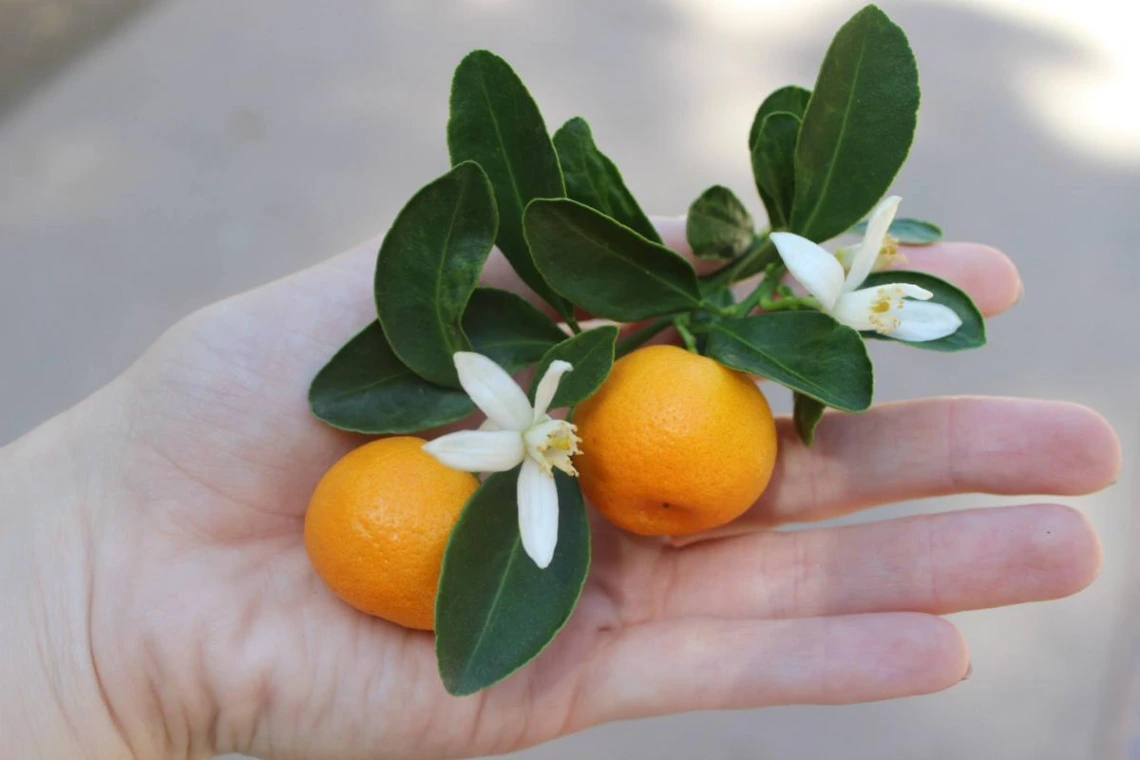Students, refugees pick 'sour oranges', a misunderstood fruit with many values
By Haley Anderson

Under the shade of the Seville orange tree, Barbara Eiswerth treats an orange like a scratch-n-sniff sticker, scraping the peel with her fingernail, then handing it to a student to smell. The Seville orange smells more lemony than the sweet orange. The half a dozen students taking the sniff test then grabbed their pickers and headed over to some of the trees growing Seville oranges – also known as sour oranges or bitter oranges – during the harvest at the Slonaker House on the University of Arizona campus in early February.
Gleaning of Seville oranges and Calamondin limes, another tart citrus fruit, kicked off the first of several citrus harvests this spring semester by UA LEAF (Linking Edible Arizona Forests), the Iskashitaa Refugee Network and volunteers. Eiswerth, director of the Iskashitaa Refugee Network and one of the leaders for UA LEAF, considers this early fruiting a potential sign of climate change in the Southwest. “We have seen that our spring citrus harvests are three to four weeks ahead of time,” Eiswerth said. “It has thrown a wrench into our planning.”
The Seville orange is viewed as ornamental or an inedible fruit by many people. If there is an orange tree along the street, not enclosed by a wall going to waste in a residential neighborhood, you can bet that it is a Seville orange tree, said Eiswerth. “The Seville Orange has a bad rap as an edible tree”, said Eiswerth as she passed around samples of sweetened Seville orange swirls and dried peels that students found quite tasty. “It is a lost wisdom of how to use this fruit.” Many bike friendly promenades and streets are lined with these desert adapted citrus that provide sweet blossom smells in the spring and visually appealing orange dotted trees for much of the year. Seville orange trees are also easily available at local nurseries, yet few truly know their culinary versatility unless speaking with our Middle Eastern students or United Nations refugees.
Contrary to its reputation, the Seville orange has multiple uses and health benefits. The peel alone can be used to improve appetite, settle an upset stomach, and clear nasal congestion according to the media service WebMD. The article notes the fruiting flower can lower blood sugar and stimulate blood circulation along with many other blood and organ related issues In some countries the Seville orange is preferred over lemons, Eiswerth said. They are commonly used in Middle Eastern dishes like dolma and tabouli.

Refugees with the Iskashitaa Refugee Network often educate Tucsonans about their many uses during the harvests, cooking demonstrations and food preservation workshops. The network, a Tucson-based group that for more than a decade has been gleaning urban fruit that would otherwise go to waste, has attracted national attention.
Joel Berg, the executive director for the New York City Coalition Against Hunger, attended the February citrus harvest in support of the Iskashitaa Refugee Network and UA LEAF efforts. Hunger is an increasing health risk especially with the recent budget cut of $5 billion annually to the food stamp program known as SNAP (Supplemental Nutrition Assistance Program), Berg said.

UA LEAF, supported by the Green Fund, will be having multiple citrus harvests this spring semester. To stay updated and get involved, check out our Facebook page.

Find out more at: https://www.facebook.com/UALEAF

